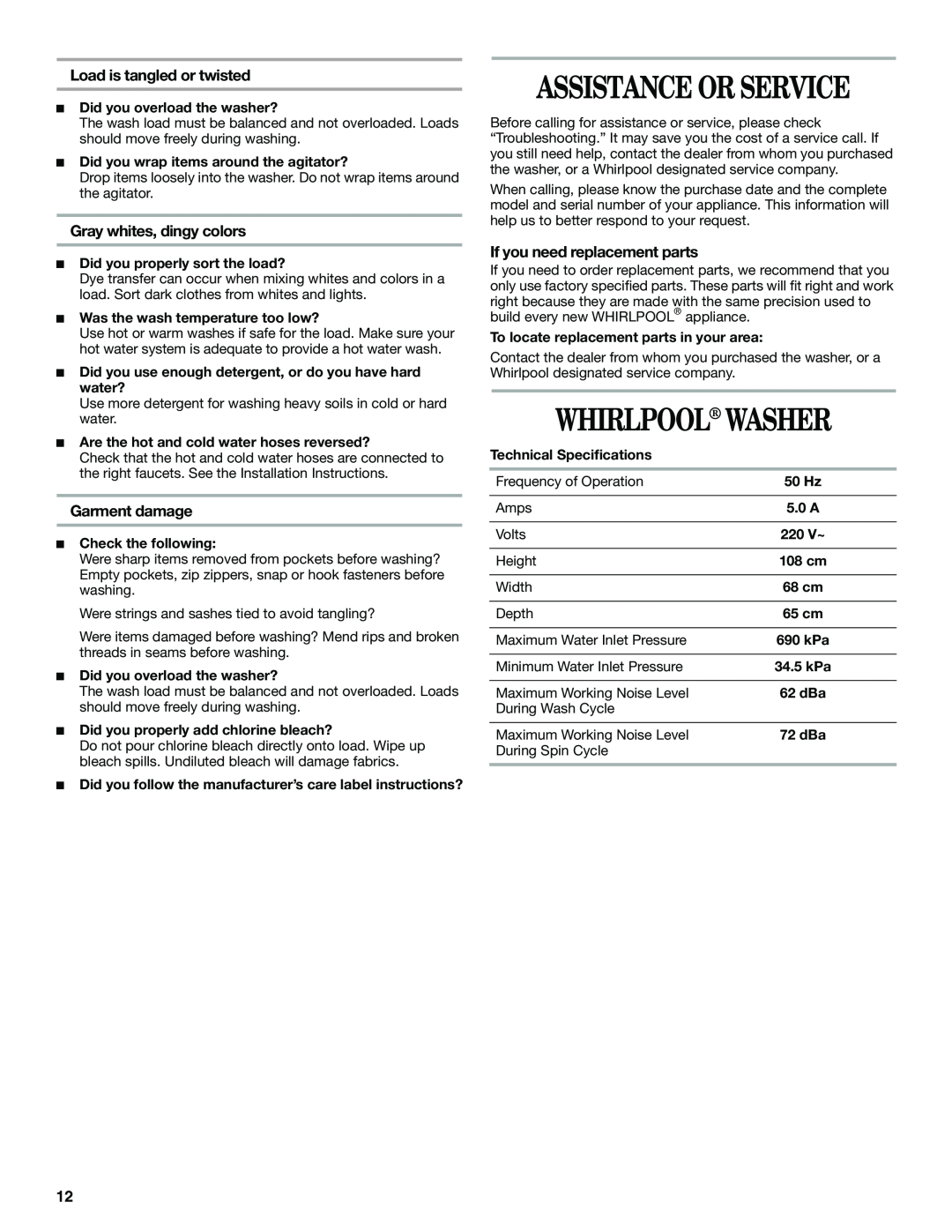
Load is tangled or twisted
■Did you overload the washer?
The wash load must be balanced and not overloaded. Loads should move freely during washing.
■Did you wrap items around the agitator?
Drop items loosely into the washer. Do not wrap items around the agitator.
Gray whites, dingy colors
■Did you properly sort the load?
Dye transfer can occur when mixing whites and colors in a load. Sort dark clothes from whites and lights.
■Was the wash temperature too low?
Use hot or warm washes if safe for the load. Make sure your hot water system is adequate to provide a hot water wash.
■Did you use enough detergent, or do you have hard water?
Use more detergent for washing heavy soils in cold or hard water.
■Are the hot and cold water hoses reversed?
Check that the hot and cold water hoses are connected to the right faucets. See the Installation Instructions.
Garment damage
■Check the following:
Were sharp items removed from pockets before washing? Empty pockets, zip zippers, snap or hook fasteners before washing.
Were strings and sashes tied to avoid tangling?
Were items damaged before washing? Mend rips and broken threads in seams before washing.
■Did you overload the washer?
The wash load must be balanced and not overloaded. Loads should move freely during washing.
■Did you properly add chlorine bleach?
Do not pour chlorine bleach directly onto load. Wipe up bleach spills. Undiluted bleach will damage fabrics.
■Did you follow the manufacturer’s care label instructions?
ASSISTANCE OR SERVICE
Before calling for assistance or service, please check “Troubleshooting.” It may save you the cost of a service call. If you still need help, contact the dealer from whom you purchased the washer, or a Whirlpool designated service company.
When calling, please know the purchase date and the complete model and serial number of your appliance. This information will help us to better respond to your request.
If you need replacement parts
If you need to order replacement parts, we recommend that you only use factory specified parts. These parts will fit right and work right because they are made with the same precision used to build every new WHIRLPOOL® appliance.
To locate replacement parts in your area:
Contact the dealer from whom you purchased the washer, or a Whirlpool designated service company.
WHIRLPOOL® WASHER
Technical Specifications
Frequency of Operation | 50 Hz |
|
|
Amps | 5.0 A |
|
|
Volts | 220 V~ |
|
|
Height | 108 cm |
|
|
Width | 68 cm |
|
|
Depth | 65 cm |
|
|
Maximum Water Inlet Pressure | 690 kPa |
|
|
Minimum Water Inlet Pressure | 34.5 kPa |
|
|
Maximum Working Noise Level | 62 dBa |
During Wash Cycle |
|
|
|
Maximum Working Noise Level | 72 dBa |
During Spin Cycle |
|
|
|
12
